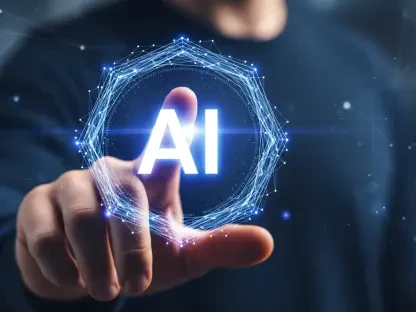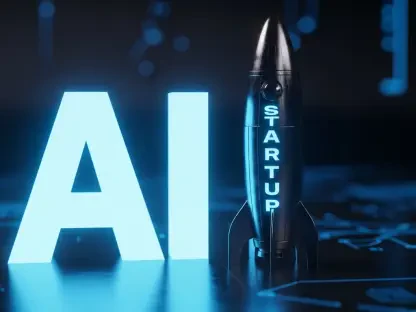Imagine a platform where over 1.1 billion professionals connect, and among them, 63 million decision-makers hold the keys to unlocking unprecedented business growth through strategic partnerships and opportunities. LinkedIn stands as the cornerstone of B2B networking, yet the challenge of standing out in such a vast digital arena can be daunting. Enter artificial intelligence (AI), a revolutionary force that is reshaping how businesses generate leads on this platform by automating mundane tasks, personalizing interactions, and delivering data-driven insights. This guide aims to help readers harness the power of AI to transform their B2B lead generation strategies on LinkedIn, driving efficiency and boosting conversion rates. By exploring the intersection of technology and professional networking, a clear path emerges for scaling outreach and building meaningful connections.
The significance of integrating AI into LinkedIn strategies cannot be overstated in today’s competitive landscape. Businesses are under constant pressure to optimize their sales funnels and connect with high-value prospects amidst an ever-evolving algorithmic environment that prioritizes relevance and authenticity. This guide provides a comprehensive roadmap for leveraging AI tools to enhance engagement, streamline processes, and achieve measurable results. From personalized messaging to predictive analytics, the focus lies on practical applications that align with LinkedIn’s core principles, ensuring both compliance and impact.
Understanding the potential of AI on LinkedIn offers a distinct advantage for companies seeking to stay ahead of the curve. The shift from manual, time-intensive outreach to automated, intelligent systems represents a fundamental change in how B2B relationships are forged. This exploration delves into specific strategies and benefits, equipping readers with actionable insights to navigate the complexities of modern lead generation. The journey through AI’s transformative capabilities promises to redefine efficiency and effectiveness in professional networking.
The AI Revolution in B2B Lead Generation: A Game-Changer for LinkedIn
The advent of AI has ushered in a new era for B2B lead generation on LinkedIn, fundamentally altering the dynamics of professional networking. Where traditional methods once relied heavily on manual effort and broad, often ineffective campaigns, AI introduces precision and scalability that were previously unimaginable. This technological leap enables businesses to engage with prospects in ways that are not only more efficient but also deeply personalized, ensuring that every interaction holds greater potential for success.
LinkedIn, as a platform, thrives on meaningful connections and relevant content, and AI tools are uniquely positioned to amplify these elements. By automating repetitive tasks, enhancing data analysis, and tailoring outreach, companies can focus on strategy rather than logistics. The seismic shift brought by AI is evident in its ability to process vast amounts of user data, turning raw information into actionable insights that drive business growth at an accelerated pace.
Looking ahead, the integration of AI into LinkedIn strategies opens up a spectrum of opportunities, from refining engagement tactics to uncovering untapped market segments. This guide will navigate through key areas such as automation of routine interactions, advanced analytics for targeting, and the broader implications for business development. The promise of AI lies in its capacity to transform challenges into stepping stones for innovation, setting a new standard for what is possible in B2B networking.
Why AI Matters: The Evolution of LinkedIn as a B2B Powerhouse
LinkedIn has solidified its status as an indispensable hub for B2B networking, boasting a user base of 1.1 billion individuals, including 63 million decision-makers who shape industry trends and purchasing decisions. This vast network serves as a fertile ground for businesses seeking to establish partnerships and drive revenue. However, the sheer scale of the platform demands sophisticated tools to navigate effectively, and AI emerges as the critical enabler in meeting this need with unmatched precision.
Historically, lead generation on LinkedIn relied on labor-intensive outreach, where sales teams manually scoured profiles and sent generic messages with limited success. The evolution toward AI-driven strategies marks a pivotal transition, aligning seamlessly with LinkedIn’s algorithmic emphasis on relevance and authentic engagement. These intelligent systems analyze user behavior and preferences to deliver interactions that resonate, ensuring that efforts are not wasted on unqualified leads or misaligned messaging.
In a competitive B2B landscape, the urgency for businesses to adapt to AI cannot be ignored. Companies that fail to embrace these technologies risk falling behind as competitors leverage automation and analytics to build stronger connections faster. The integration of AI into LinkedIn strategies is not merely a trend but a necessary evolution, providing the tools to thrive in an environment where efficiency and personalization are paramount for sustained growth.
Key Ways AI Is Redefining LinkedIn Lead Generation Strategies
AI is revolutionizing the approach to B2B lead generation on LinkedIn by offering innovative solutions at every stage of the process. The following steps outline how this technology reshapes strategies, providing actionable methods to enhance outreach and engagement. Each phase leverages AI’s capabilities to address specific challenges, ensuring that businesses maximize their impact on the platform.
Step 1: Hyper-Personalized Outreach with AI Algorithms
AI algorithms excel at dissecting vast datasets to create highly personalized outreach on LinkedIn, significantly increasing connection acceptance rates by up to 44%. By analyzing profiles, past interactions, and industry trends, these tools identify what motivates a prospect to engage. This level of customization ensures that initial contact feels relevant and targeted, setting a strong foundation for building trust and rapport.
Crafting Messages That Resonate
Delving deeper, AI pinpoints specific user preferences and pain points to craft messages that strike a chord with the recipient. Whether highlighting a shared challenge or referencing a recent achievement, the content feels bespoke rather than mass-produced. Such tailored communication not only boosts response rates but also establishes a genuine connection, critical for long-term relationship building in a B2B context.
Step 2: Automating Repetitive Engagement Tasks
A significant advantage of AI lies in its ability to automate time-consuming tasks such as profile visits, likes, and comments, maintaining consistent engagement without draining resources. This automation allows businesses to interact with a larger audience while freeing up time for strategic planning. The result is a sustained presence on LinkedIn that keeps prospects engaged over extended periods.
Scaling Efforts Without Losing Authenticity
While automation scales efforts, maintaining authenticity remains crucial to adhere to LinkedIn’s guidelines. AI tools are designed to mimic human-like interactions, ensuring that automated actions appear natural and relevant. This balance prevents the risk of appearing robotic or spammy, preserving the integrity of the brand while expanding its reach across the platform.
Step 3: Leveraging Predictive Analytics for Smarter Targeting
Predictive analytics powered by AI enables businesses to identify high-potential leads and optimize campaign timing, enhancing effectiveness by up to 69%. By forecasting which prospects are most likely to convert based on historical data and current trends, AI refines targeting strategies. This precision reduces wasted effort and focuses resources on opportunities with the highest return.
Pinpointing Decision-Makers with Precision
Specific AI tools prioritize leads by analyzing intent and behavioral signals, ensuring outreach targets decision-makers who are ready to engage. These platforms sift through LinkedIn data to highlight individuals showing active interest or alignment with a product or service. Such pinpoint accuracy transforms lead generation into a more strategic, results-oriented endeavor.
Step 4: Optimizing Content for Algorithmic Success
AI-driven platforms play a pivotal role in creating and refining content, such as posts and videos, to align with LinkedIn’s algorithm for maximum visibility. By understanding what types of content garner engagement, these tools suggest formats, topics, and posting schedules that amplify reach. This optimization ensures that a company’s message cuts through the noise of a crowded feed.
Data-Driven Storytelling Techniques
Beyond basic content creation, AI tailors narratives using data-driven storytelling techniques to captivate audiences. Insights into what resonates with specific industries or roles allow for content that speaks directly to viewer needs. This approach not only boosts engagement but also positions the brand as a thought leader, fostering credibility among prospects.
Step 5: Streamlining Sales Funnels with CRM Integration
AI tools integrate seamlessly with CRM systems to track leads and improve conversion rates by as much as 91%. This connectivity ensures that data from LinkedIn interactions flows directly into sales pipelines, providing a comprehensive view of prospect journeys. Such integration eliminates silos and enhances the ability to nurture leads effectively through every funnel stage.
Turning Insights into Actionable Strategies
The real-time flow of data between LinkedIn and CRM platforms empowers businesses to make informed decisions swiftly. Insights gained from AI analysis translate into actionable strategies, such as timely follow-ups or tailored offers based on prospect behavior. This synergy accelerates the path from initial contact to closed deal, optimizing overall sales performance.
Core Benefits of AI-Driven Lead Generation on LinkedIn
Adopting AI tools for LinkedIn lead generation offers a range of transformative advantages that enhance business outcomes. These benefits underscore why companies are increasingly turning to technology to refine their approach on the platform:
- Increased efficiency through automation of repetitive, time-intensive tasks.
- Enhanced personalization leading to higher connection and engagement rates.
- Data-driven targeting that significantly improves lead quality and relevance.
- Substantial boosts in campaign performance and measurable conversion metrics.
- Seamless integration with existing sales systems for streamlined, cohesive workflows.
The Broader Impact: AI, SaaS, and the Future of B2B Networking
The influence of AI on LinkedIn extends beyond individual business strategies, shaping the broader landscape of B2B networking through the rise of SaaS platforms. The market for AI-driven engagement tools is characterized by high gross margins of 80–90% and a penetration rate below 10% among LinkedIn’s massive user base. This low adoption rate signals immense growth potential, with projections estimating the Customer Engagement Solutions Market to expand from $9.6 billion in 2025 to $22.5 billion by 2033, reflecting a robust compound annual growth rate.
SaaS startups in this space are carving out opportunities by addressing niche challenges in lead generation, such as hyper-targeted outreach and ethical compliance with platform policies. Investment interest is fueled by strong revenue per user, often ranging between $50 and $200 monthly, alongside high customer retention driven by personalized results. However, challenges like regulatory risks, including frameworks such as the EU’s AI Act, necessitate careful navigation to ensure sustainable growth and compliance.
Looking toward the horizon, trends such as ethical AI practices and the emergence of specialized startups are poised to redefine B2B networking further. The focus on transparency and niche solutions aligns with LinkedIn’s commitment to authenticity, creating a fertile ground for innovation. As these dynamics unfold, the intersection of AI and SaaS continues to offer a compelling arena for businesses and investors aiming to capitalize on evolving market demands.
Embracing AI on LinkedIn: Next Steps for Businesses
Reflecting on the journey through AI’s transformative role in B2B lead generation on LinkedIn, businesses have gained a clear understanding of the steps taken to revolutionize outreach and engagement. From hyper-personalized messaging to predictive analytics and CRM integration, each strategy has been meticulously explored to ensure practical implementation. The path navigated has demonstrated how technology elevates efficiency and connection quality in a competitive digital space.
Moving forward, the focus shifts to actionable next steps, encouraging companies to evaluate AI platforms that prioritize personalization, seamless integration, and strict adherence to LinkedIn’s operational guidelines. Exploring specific tools tailored to unique business needs has proven essential, as have considerations for scalability in solution adoption. Partnerships with innovative SaaS startups offer a promising avenue to stay at the forefront of this technological wave.
Beyond immediate adoption, attention has turned to long-term strategies, such as investing in continuous learning about AI advancements and market shifts. Businesses are advised to monitor emerging ethical standards and regulatory changes to maintain compliance while maximizing impact. By building robust frameworks around these tools, the foundation has been laid for sustained growth and leadership in B2B networking on LinkedIn.









